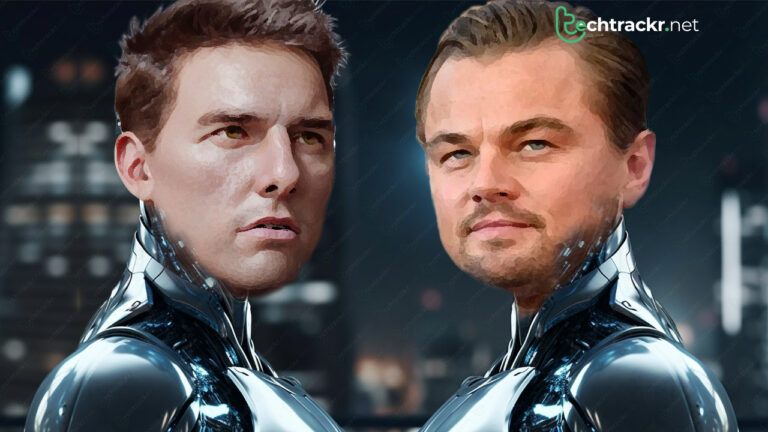
The process of making films and shows for studios and streaming platforms involves many actors. With around 160,000 of its members engaged in a strike for the past few days, SAG-AFTRA, the prominent actors’ union, harbors concerns that using artificial intelligence (AI) could potentially lead to a drastic fall in the number of employed actors in the coming years.
With the ongoing discussions between actors and prominent studios and streaming platforms producing movies and television content, the talks have reached a deadlock, primarily due to a handful of controversial matters. Yet, one particular issue stands out in terms of its nature and its enigmatic future impact: the utilization of artificial intelligence.
With Hollywood at the center of things, the potential impact of AI might initially appear to outdo writers than actors. The Writers Guild of America, engaged in a strike against the studios and streaming platforms since May 2, wants to set the boundaries on AI utilization. However, SAG-AFTRA and its strike-involved constituents also have apprehensions regarding the aftermath of AI.
Actors worried about losing their jobs to virtual actors
Using computer-generated imagery (CGI) to replicate actors’ likenesses and supporting cast members is not new in Hollywood. Compared to how computers changed the animation process, replacing actors who crafted 24 frames of artwork for each second of film, AI has similarly reduced the cost and time for CGI to fabricate performances by absentee actors. Consequently, SAG-AFTRA contends that the studios’ intention to employ AI effectively could mean the elimination of acting roles.
The notion of using AI-generated performances is no longer confined to the shackles of speculation; it has transitioned into an active reality. The development of AI-generated deepfakes, showcased in a series of authentic-looking videos featuring Tom Cruise, caught everyone’s attention primarily in the social media space rather than finding widespread use in productions from studios for movies and TV shows.
But at the same time, this technology has the potential to seamlessly replace the actors occupying background positions in streaming and studio projects. These roles are usually credited as “bouncer at the club” or “waitress in the restaurant.” Within these roles, a huge chunk of the employment opportunities important for the financial sustenance of SAG-AFTRA members materialize.
As of now, not everyone is on board with the idea that AI could replace actors. But some opposing factions are not even ready to move ahead with the studios’ proposed course of action concerning AI utilization in the future. The Alliance of Motion Pictures and Television Producers (AMPTP), which represents studios and streaming platforms, claims that its proposal brings new safeguards pertaining to AI for actors. The authority says the proposition aims to safeguard the digital likenesses of performers, encompassing provisions that mandate performers’ consent for developing and applying digital duplicates or modifying their performances.
The union isn’t ready to budge
Despite the assurance from AMPTP, the union remains steadfast in asserting the great danger to their employment, saying that the studios’ guarantee lacks the substantial value they seek. Duncan Crabtree-Ireland, the union’s chief negotiator, said the proposition suggests background actors should undergo scanning, receiving payments equivalent to a single day’s pay.
However, in exchange, the production company will have access to this scan, which has the actor’s image and likeness. This could allow the studio to use the actor’s likeness across various projects without paying any compensation.
AMPTP has denied having any such terms in its proposal, claiming that using an actor’s likeness would exclusively be used in the film or TV show for which the background actor has been employed. While SAG hasn’t divulged the specifics of its alternative proposition, it’s clear that actors are not ready for studios to use their likenesses without their consent, involvement, and adequate compensation.
The strike won’t completely ban the utilization of AI
No matter what agreement these two authorities reach regarding AI’s involvement in film and TV production, it’s highly unlikely to result in an absolute ban on its use in producing virtual actors for films and television. Rather, it is believed that the outcome will revolve around establishing regulations governing AI’s use, alongside setting a compensation standard for actors whose voice or appearance is modified and used through AI techniques.
Using CGI to create virtual performances has been a longstanding practice in Hollywood, spanning several decades. It has been commonly used to generate expansive crowd shots for sports-themed scenes and during battle sequences. There have been instances where studios have resorted to CGI to capture close-up shots of characters, particularly when the original actor was unavailable. A noteworthy illustration of this occurred in Fast and Furious 7, when CGI was used to film a concluding scene featuring Paul Walker. The scene was achieved even after the actor’s passing.
However, the speed at which AI is evolving can be among the key factors contributing to the complexity of achieving a resolution, as hinted by experts.
AI’s use won’t just be limited to Hollywood
Several cases about AI are currently underway within the US, and the effects of their resolution could extend way beyond the boundaries of the entertainment industry, affecting a broad spectrum of individuals.
AI’s impact going beyond the areas of arts and publishing can put a broader array of professions in danger. Several positions classified as “cognitive,” including several white-collar roles, are at risk of being replaced by AI. It seems that manual labor might be a big challenge for AI to replace.
That said, if AI were to eventually write and produce films without any contribution from writers, directors, actors, set designers, makeup artists, or cinematographers, one question remains: would you really want to watch it?
Undoubtedly, AI can beat humans in numerous tasks and games, such as chess. Despite this, people have continued to invest their money in watching the finest human chess players pitted against each other. However, whether it will be the same for the movies remains to be seen!
